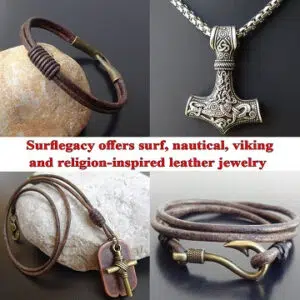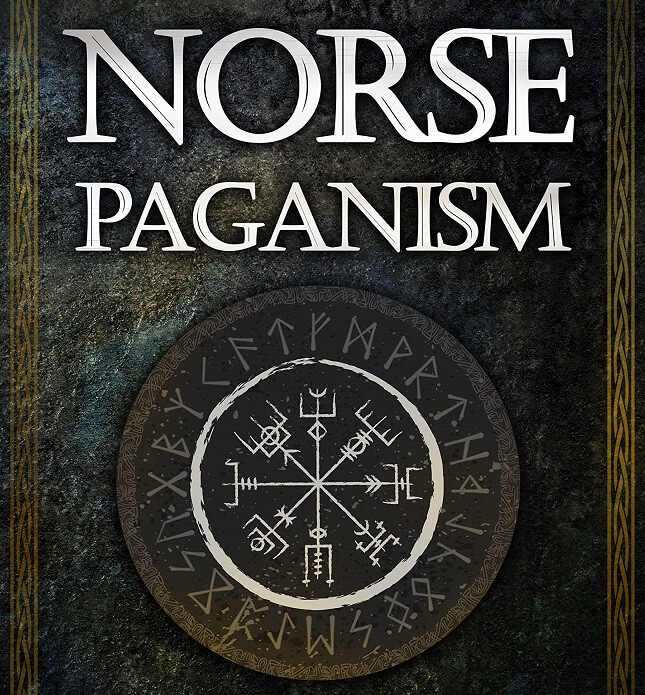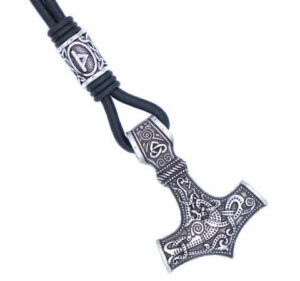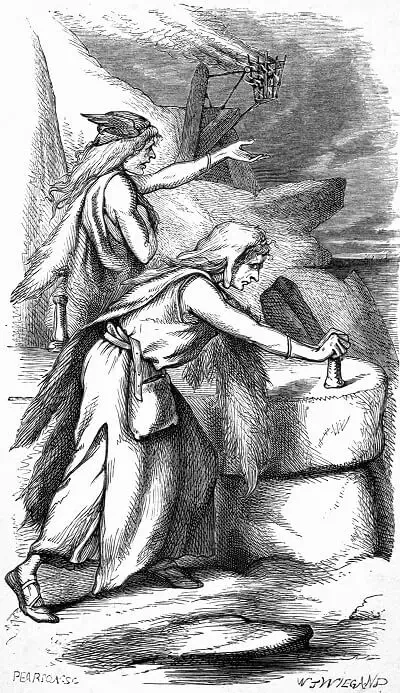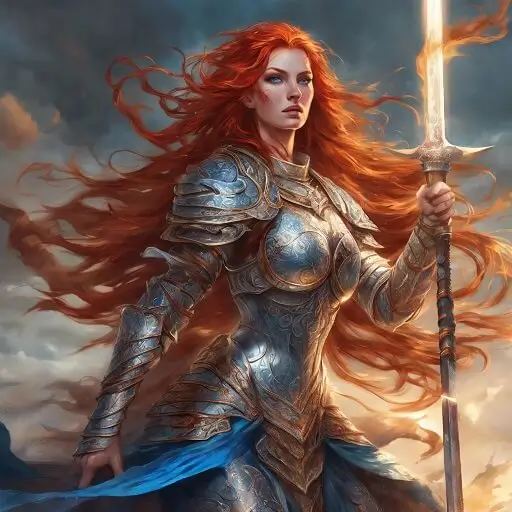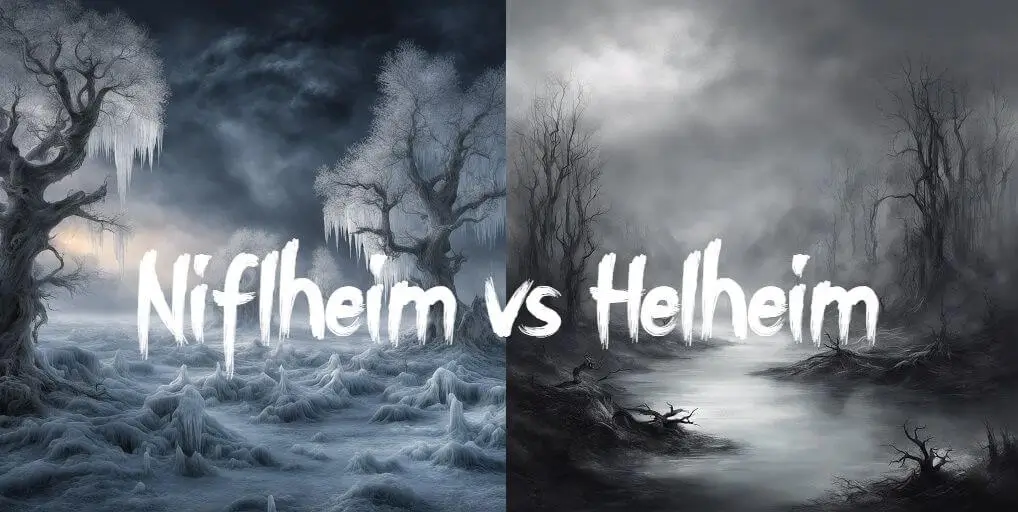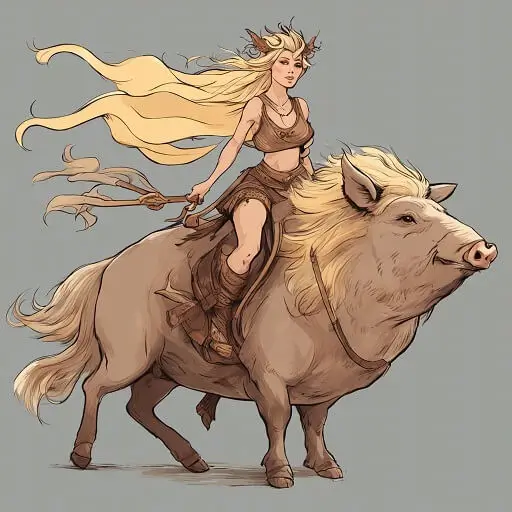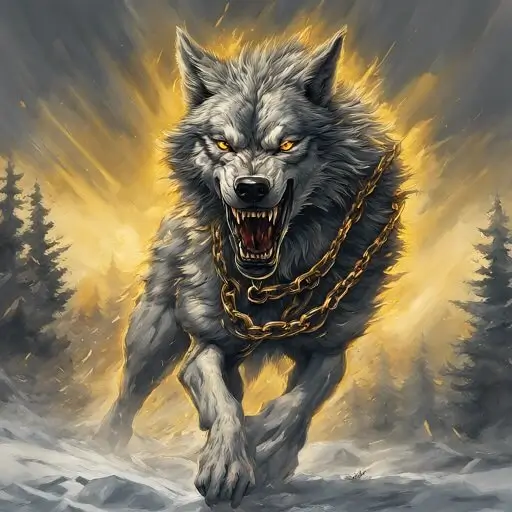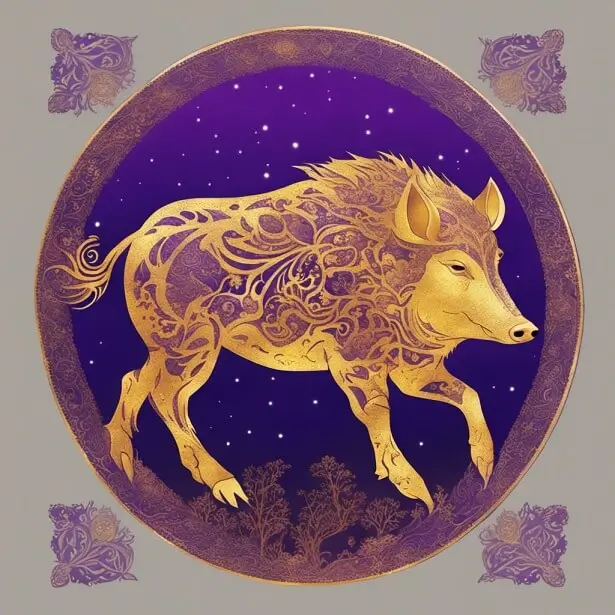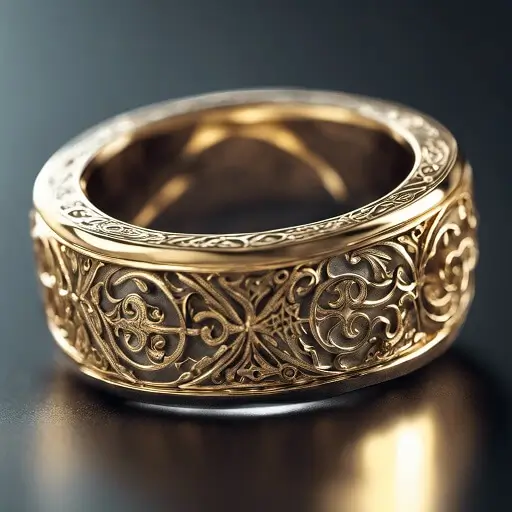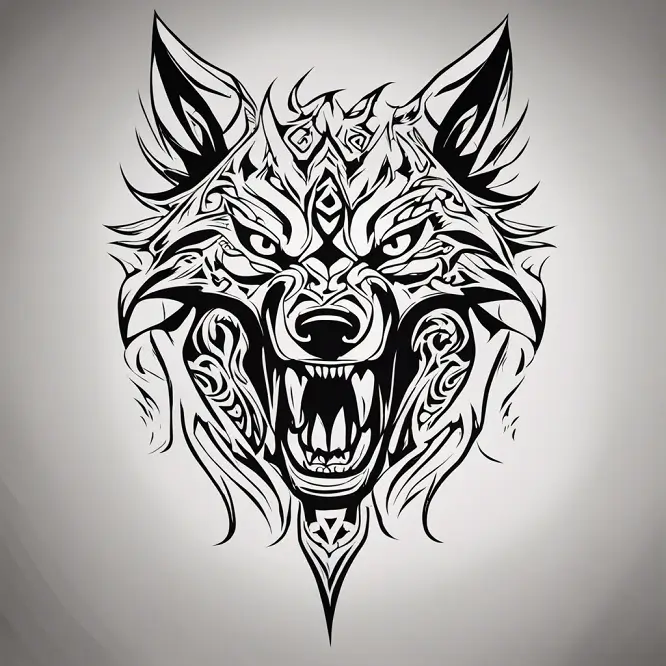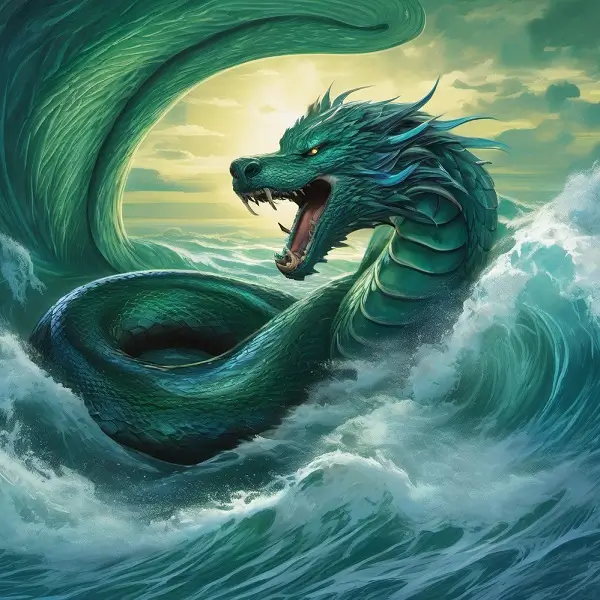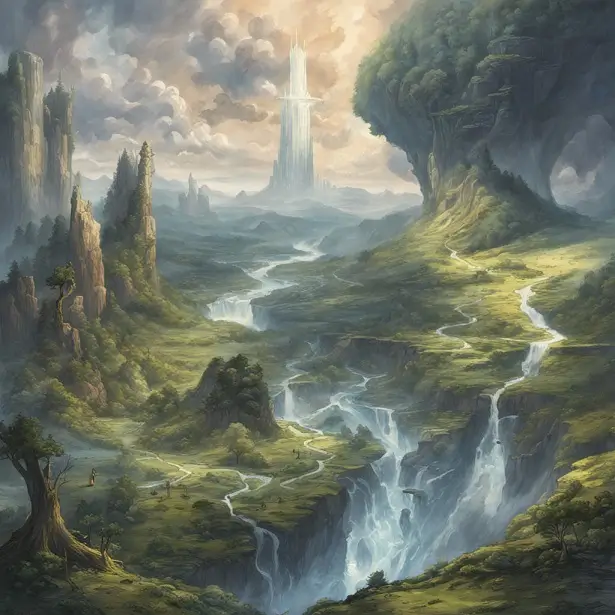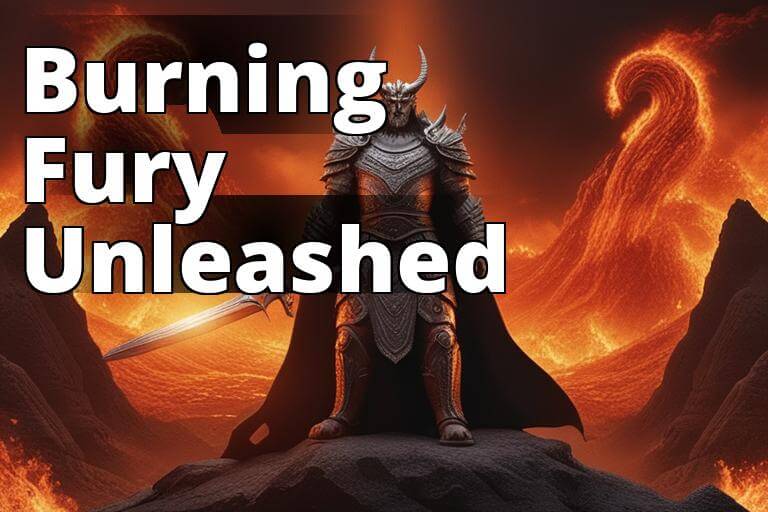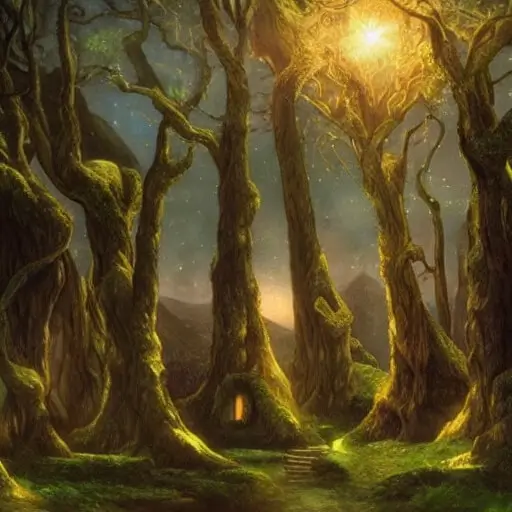If you’re interested in Norse Paganism and want to learn more, this is the article for you! Here you’ll find everything you need to know about this ancient belief system, from its history and mythology to its practices and modern-day followers. So sit back, relax, and get ready to learn all there is to know about Norse Paganism! Are you ready? First of all, let’s start with the basics.
What is exactly Norse Paganism?
Norse paganism is a term used to describe the religious beliefs and practices of the people who lived in Scandinavia during the Viking Age. Norse pagans worshipped a pantheon of gods and goddesses, including Odin, Thor, Freyja, and Freyr.
Odin was the god of war and he was also the ruler of the gods. Thor was the god of thunder and he was the protector of the gods. Freyja was the goddess of love and beauty, and she was also the goddess of war. Freyr was the god of fertility and was associated with the sun.
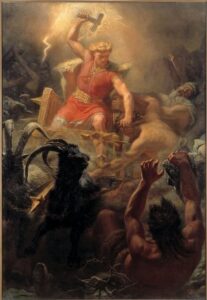
Thor with his mighty Hammer
Norse Paganism is a religious movement based on pre-Christian Scandinavian practices and beliefs. The origins of the Norse Religion can be traced back to the Iron Age and continued until the Christianization of Scandinavia.
Many kings converted to Christianity at the start of the Christianization process for military and economic reasons. Instead of choosing one or the other, some ordinary people incorporated the Christian god into their polytheistic pantheon. . As a result, the Norse religion never completely vanished: many Pagan myths, folklore, and rituals were influenced by Christianity, and vice versa.
In recent years it has experienced a resurgence in popularity, especially in Scandinavia. and many religious groups base their beliefs on the Old Norse Religion. Asatru, which is recognized as an official religion in some countries, Vanatru, or Heathenry (although the latter is not exclusively Norse Pagan), are some examples.
This is partly due to the fact that many people are interested in exploring their Viking heritage, but it is also due to the fact that is a very nature-based religion that is seen as being more in tune with the natural world than many other religions.
If you are interested in exploring it, there are a few things you should know.
- It is important to remember that Norse paganism is a polytheistic religion, which means that there are multiple gods and goddesses that are worshipped.
- It is very focused on ancestor worship and on maintaining a good relationship with one’s ancestors.
- It places emphasis on the importance of nature and the natural world. Many of the gods and goddesses are associated with specific natural phenomena, such as the sea, the sky, or the harvest.
Many practitioners believe that the natural world is full of spirits that must be respected in order to maintain balance and harmony.
Although there is no one central authority or set of beliefs, its practitioners typically base their faith on the ancient Norse texts known as the Eddas.
Norse Paganism Beliefs
Norse paganism is a term used to describe the religious beliefs and practices of the Norse people. It has its roots in the pre-Christian belief systems of the Norse people.
These belief systems were based on a number of different sources, including deity, nature, and ancestor worship. Norse pagans believed in a number of different spirits, including those of nature and the ancestors. They also believed in fate, and that the gods and goddesses controlled the destiny of humans.
These deities are often represented as natural forces or beings, such as animals or trees, followers of Norse paganism often seek to connect with these spirits in order to gain guidance or power in their lives. Fate, or the concept of predestined events, is also an important part of Norse pagan beliefs.
Sacred places and objects are often associated with specific gods or goddesses, and are used in rituals and ceremonies meant to honor them. Norse pagans believed that these gods and goddesses interacted with the world and that they could influence the course of human events.
They believed that Odin, Thor, Freyja, and Freyr were involved in the daily lives of people and that they could help or hinder them.
Norse pagans also believed in reincarnation and that the soul was reborn after death. They believed that the soul went to one of two places after death.
The first was Valhalla, which was a paradise for warriors. We have written more on it here
The second was Hel, which was the realm of the dead.
Norse Paganism Symbols
The most important symbols are the Hammer of Thor, ( also called Mjolnir) the tree of life (Yggdrasil), the runes and the Valknut, to mention a few. The hammer of Thor is a symbol of strength and protection, while the tree of life represents the cycle of life and death. The rune stones are believed to have magical properties, and the Valknut is a symbol of death and the afterlife. We have also written a very detailed article on this topic “Viking Symbols And Their Meanings The Complete Guide”
Mjolnir with a rune, two of the most powerful Viking’s symbols
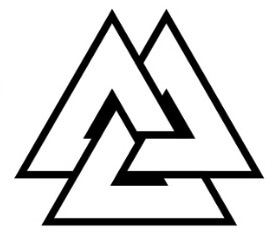
Valknut Symbol
Can you convert to the Norse Pagan Religion?
Yes is a religion that can be explored by anyone, regardless of their background. It is a belief system based on the worship of gods and goddesses from Norse mythology, and it has its roots in Scandinavia. While it is possible to convert to Norse paganism, it is not necessary in order to follow the religion.
Becoming a Norse Pagan is possible. There are no initiation ceremonies as in other religions, but there are a few things you must do to fully convert.
You might be drawn to Norse beliefs. The Gods and Goddesses sometimes speak to us in our dreams or while we are meditating.
Some people begin researching their ancestors and discover they have ancestors from Scandinavia or Germany. When researching your ancestors, you may become interested in the “Old Ways.”
How to become a Norse Pagan?
If you’re looking for a step-by-step guide to becoming a Norse Pagan, I’m sorry to disappoint you, but there isn’t one! Spirituality and religion are highly personal aspects. So we will give you only some suggestions or ideas you can follow to become a Norse Pagan
First thing, you need to find your path and decide which branch you wish to explore.
Within the Norse Religion, there are numerous branches or paths: some are communal, while others are more solitary. In some cases, they prefer to adhere to tradition as much as possible, whereas other paths modernize the religion or are more philosophical.
Do you really need to take one of these paths? Certainly not! In fact, if you are a complete novice, I recommend that you begin by learning as much as you can about Norse mythology and history before committing to one.
You can learn about Norse Mythology and explore the different gods and goddesses that make up the pantheon.
You can also learn about the beliefs and practices of Norse Paganism, and how it differs from Christianity and other forms of religion. Once you have decided which path you wish to take, you can join a group or worship community, or read books about it to learn more.
You can read about Norse mythology in the Edda, a book that tells stories about the gods and goddesses. You can also worship the gods and goddesses by making offerings to them.
What’s Norse Mythology?
Norse mythology is a collection of stories about the gods and goddesses of the Norse people. These stories were passed down orally for centuries before being written down. Norse mythology tells of the creation of the world, the battles between the gods, and the adventures of the heroes. It is a rich and fascinating mythology that has inspired many works of art and literature.
The source material for Norse mythology was largely drawn from two literary sources: the Poetic Edda, a collection of poems composed in the 13th century, and the Prose Edda, a handbook for skaldic poetry composed in the 13th century. The Poetic Edda is the better known of the two, and consists of a series of poems, many of which tell the stories of the gods and heroes. The Prose Edda, on the other hand, is a technical manual for skaldic poetry, and includes a wealth of information on Norse cosmology and mythology. In addition to these two sources, many aspects of Norse mythology can be found in the Icelandic sagas, a genre of historical fiction written in the 12th–14th centuries.
Norse mythology revolves around a pantheon of gods and goddesses, as well as a number of other mythical beings and heroes. The most prominent of these deities are the Aesir, a group of warrior gods led by Odin, the god of war, wisdom, and death; and the Vanir, a group of fertility gods led by Freyja, the goddess of love, beauty, and fertility. Other important gods include Thor, the god of thunder; Loki, the god of deception and trickery; and Frey, the god of sunshine and summer.
Norse mythology also contains a number of stories about heroic human beings, such as the Volsunga saga, which tells the story of the heroic Sigurd, and the saga of King Hrolf Kraki, which tells the story of a 6th-century Danish king and his band of Viking warriors.
While much of Norse mythology is Grimdark in tone, there are also a number of lighter, more comedic tales, such as the story of Thor’s fishing trip, you can read more in the article “Jormungandr The Giant Serpent From Norse Mythology”
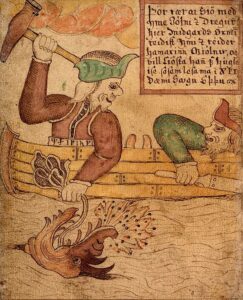
Thor’s fishing trip
Norse mythology has exerted a significant influence on modern popular culture, particularly in the form of fantasy literature and role-playing games. J.R.R. Tolkien’s The Hobbit and The Lord of the Rings, for example, both contain numerous references to Norse mythology, and the Harry Potter series makes use of a number of Norse mythological creatures, such as dragons, giants, and elves.
Norse Paganism for beginners
If you are a beginner and you want to learn more about this topic, my personal suggestion is to start reading some of these books that are available in the public domain for free, this way you do not have to invest money, especially if you are on a budget.
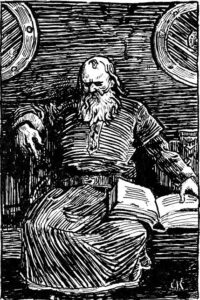
Here is a short list of the most important books that I would recommend:
1. The Prose Edda – Written by Snorri Sturluson This 13th-century Icelandic text is one of the most important sources for Norse mythology and religion.
2. The Poetic Edda – Written also by Snorri Sturluson the Poetic Edda is a collection of poems about Norse mythology and religion.
3. Heimskringla – A 13th-century Icelandic history of the Norse kings, Heimskringla is an important source for Norse paganism.
4. The Sagas – A large body of medieval Icelandic and Norwegian literature, the sagas are an important source for Norse paganism and culture.
5. Eddic Poetry – A type of Old Norse poetry, eddic poetry is characterized by its use of alliteration and kennings. Many eddic poems are about Norse mythology and religion.
6. Skaldic Poetry – Another type of Old Norse poetry, skaldic poetry is characterized by its complex verse form and use of metaphors and symbolism. Like eddic poetry, skaldic poetry often deals with Norse mythology and religion.
Modern Norse Paganism
Groups of Norse Pagans
There are 3 main groups:
Asatru
Asatru is a modern branch of Norse paganism. followers of Asatru believe in the ancient Norse gods and goddesses, and worship them through ritual and practice. They also believe in animal spirit guides, and that animals can help lead them on their spiritual path.
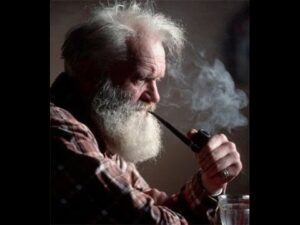
Sveinbjörn-Beinteinsson
The re-recognition of Asatru in Iceland occurred in 1973, and the journey to that point is quite fascinating. Sveinbjörn Beinteinsson, Jörmundur Ingi Hansen, Dagur orleifsson, and orsteinn Gujónsson met in a cafe in Reykjavik during the winter of 1972. That is when they had the idea to create a folk religion. It is believed that the origins of this religion were influenced by counter-cultural and religious sentiments at the time. Furthermore, nationalism and interest in spiritism and elves created a near-ideal environment for the resurgence of Asatru.
The name ásatrú means “true to the Aesir gods,” and as the name implies, it is dedicated to the worship of the Aesir (such as Thor or Odin), one of the Norse gods.
Because this is a religion based on community, the individual acts for the benefit of the group. This path’s organizations are known as “Kindred,” their priests and priestesses as “Gothar” or “Gythia” (feminine), and their congregations as “Folk.”Their main principles are based on the teachings of the Hávamál, though this book is not at the heart of the religion.
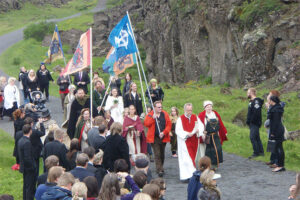
Asatru Pagans in Iceland author Lenka Kovářová
Rökkatru
The Rökkatru are those who follow the goddesses of darkness, the Thursatru are those who follow the gods of light. The Rokkr are the “giants” of Norse Mythology, and include both the Jötnar (“giants”) and the Æsir (“gods”). Rökkatru is a polytheistic religion that worships the Rokkr, a group of beings that includes both the Jötnar (“giants”) and the Æsir (“gods”).
Rökkatru is focused on honoring the dark and light aspects of both the Jötnar and the Æsir. The Rökkatru believe that it is important to balance the light and dark aspects of oneself in order to achieve harmony in one’s life. They are kind to those who deserve it and have worked hard for it. They do not and will not be spoon-fed. Their lessons are difficult, and they frequently require you to confront your shadow self.
They teach you to see things differently, to see perspectives, and to speak up about them. Loyalty to them ensures that you are accepted and protected. So if you mess with them, they will mess with you. And the Rökkr are not to be trifled with.
Vanatru
Vanatru is a neologism that means “true to the Vanir” and first appeared in print in the 1990s. The term Vanatru refers to the religious practices of Heathens (Germanic Pagans) who worship Frey, Freya, and Njord (and sometimes Nerthus). The term is also used to refer to the community of Heathens who follow these practices.
Vanuatu is a relatively new religious movement, and as such, there is no one central authority or set of beliefs. However, there are some commonalities among Vanatruar. Many Vanatruar believe that the Vanir are the original gods of the Germanic people, and that they represent the forces of nature, fertility, and magic.
Vanatruar often focuses their worship on the three main Vanir deities: Frey, Freya, and Njord. They may also honor other Vanir gods and goddesses, such as Nerthus, Ullr, and Gefjon. Vanatruar often practices magic and divination, and some belief in reincarnation. They may also use runes, sing songs and chants in their worship, and perform other rituals.
How old is Norse Paganism?
The earliest roots we know are dated back to the Iron Age and the Viking Age. It is not possible to determine the exact age of Norse paganism, but it is believed to have emerged in the late Iron Age and flourished during the Viking Age.
Is Norse Paganism a recognized Religion in America?
It is not currently recognized as a religion in the United States. However, there are a number of organizations and groups that support the practice of Norse paganism. These groups work to promote understanding and tolerance for this ancient belief system.
Does Norse Paganism require a beard?
A beard is not mandatory, but it is encouraged because is a feature of masculinity. The majority of ancient depictions of gods have beards.
Norse religions do not have commandments but only advice/suggestions, so it’s up to you if you want to grow a beard or not.
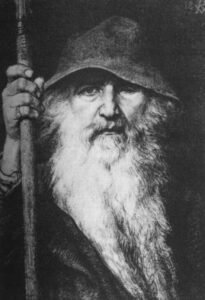
Odin
Does Norse Paganism have a Bible?
Norse paganism does not have a bible in the same way that other religions do. Instead, its followers rely on a number of different sources for guidance, including the Eddas and sagas, which are collections of Norse myths, and the Havamal, a book of moral advice. While there is no one definitive text that all Norse pagans follow, these works provide valuable insights into the beliefs and practices of this ancient faith.
Shop Viking Jewelry
Are passionate about Vikings or Old Norse mythology? Finding the ideal piece of Viking Jewelry can be challenging, especially if you lack inspiration or don’t know where to look. Surflegacy, on the other hand, has you covered. We have a wide range of Viking Jewelry in various styles, shapes, colors, and materials, to accentuate your Viking spirit and look. Visit our shop here
